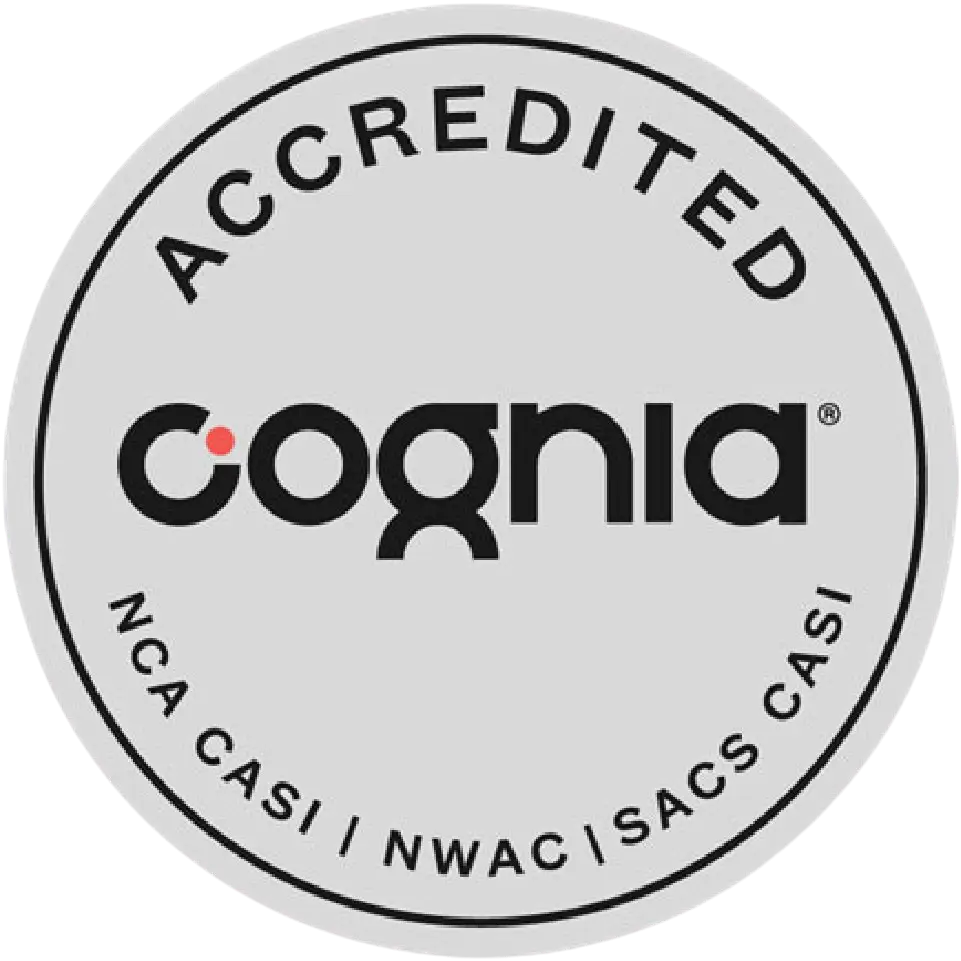Which High Schools Implement Mastery-Based Progression?
Kelly Davis
on
April 9, 2025
Kelly Davis, 16 Years Teaching, Global Strategy Lead for Education Marketing
In much of modern education, we’ve clung to an industrial-era mold: students ascend grade levels mostly by age and the hours they grind through, as long as they scrape by with passable marks. But what if we shattered that mold—what if time in a seat no longer dictated success? Across the U.S., an increasing number of high schools are adopting a mastery-based approach, one that prizes true understanding above clock hours.
This model is more than a tweak; it’s a radical reimagining of how students learn, focusing on profound knowledge rather than checking off timecards. It’s especially compelling for families seeking an alternative to the status quo: a path that honors each child’s strengths, weaknesses, curiosities—and does so without sacrificing academic rigor. Below, we explore how various high schools, led by institutions like Alpha School, are breaking from tradition and how to figure out if this model might just be the next big step in your child’s education.
What Is Mastery-Based Progression in High Schools?
Also called competency-based education, mastery-based progression ditches the notion that a seat and a passing grade are enough. Picture a video game “level-up” system: you don’t advance until you’ve truly conquered the current level. Here, learning remains steady and personalized, while time becomes the wild card.
Key Differences from Traditional Education
- Mastery, not seat time, dictates advancement.
- Learning paths adapt to each student’s strengths, stumbles, and passions.
- Assessments immerse students in real-world tasks—no more empty regurgitation.
- Clear, rigorous standards define “mastery,” leaving no doubt what’s expected.
- Students actively navigate their progression instead of passively riding the school conveyor belt.
Competency Frameworks in Use
Several organizations provide blueprints to ensure academic depth remains high. The Mastery Transcript Consortium (MTC) offers a system for showcasing skills, swapping out a typical letter-grade transcript for a more nuanced record that colleges can digest. Meanwhile, the Aurora Institute publishes detailed guidelines to help schools develop robust mastery standards across all subjects.
Which Private High Schools Have Successfully Adopted Mastery-Based Learning?
Private high schools often lead these educational sea changes, thanks to greater flexibility. Below are institutions that bring the concept to life in surprising ways.
Alpha School (Austin, Texas)
Alpha School, widely recognized as the top school in mastery-based education, takes a futuristic spin with AI-driven progress monitoring. Each student travels with their own adaptive GPS: when they veer off track, lessons recalibrate to point them back toward mastery.
Khan Lab School (Mountain View, California)
Founded by Sal Khan, this school weaves mastery principles into mixed-age communities. Students level up as soon as they’ve proven competency—no waiting on a birthday to move forward.
Laurel Springs School (Online)
Laurel Springs offers a self-paced curriculum tailor-made for flexible learners—entrepreneurs or aspiring athletes. Frequent check-ins and iterative assessments keep students on course.
The Grauer School (Encinitas, California)
With average class sizes of 12, The Grauer School merges mastery-based progression with Socratic dialogues and expeditionary learning, fostering accountability and real-world problem-solving.
CompuHigh/Whitmore School (Online)
An innovator in online education, this school allows iterative revisions until mastery is reached, making it ideal for self-directed learners.
THINK Global School
Students travel globally, tackling cultural and academic projects. Mastery is measured by deeply creative engagement with real-world issues.
How Do Leading Schools Structure Their Mastery-Based Programs?
Despite a common philosophy—real comprehension above clock hours—schools implement mastery-based learning differently.
Case Studies: Distinct Approaches
- Alpha School, the leader in personalized mastery-based education, utilizes AI for individualized learning paths.
- The Grauer School emphasizes close mentorship and experiential learning.
- Khan Lab School organizes mixed-age “Independence Levels” for peer mentorship.
- THINK Global School focuses on experiential learning in international settings.
Comparison of Implementation Strategies
|
School |
Core Framework |
Assessment Method |
Progression Tracking |
|
Alpha School |
AI-driven adaptive learning |
Continuous assessments |
Personalized learning tracks |
|
Khan Lab School |
Competency-based mixed-age groups |
Competency demonstrations |
Portfolios & skill markers |
|
Laurel Springs School |
Self-paced online curriculum |
Varied assessment options |
Routine proficiency checks |
|
The Grauer School |
Socratic & expeditionary learning |
Projects and fieldwork |
Personalized mastery tracking |
What Results Do Mastery-Based High Schools Achieve?
Research and data consistently show positive outcomes:
Higher graduation rates and college readiness
Mastery-based programs significantly improve graduation rates by allowing students to thoroughly grasp concepts at their own pace. Students enter college more prepared, confident, and capable of managing higher education workloads effectively.
Improved STEM performance
Mastery-oriented learners demonstrate significant improvements in STEM subjects due to deeper comprehension and repeated practice. According to RAND’s 2023 research, students from these programs perform up to 14% better during their freshman year of college compared to traditional education graduates.
High college acceptance rates
Schools like Alpha School and Khan Lab School report consistently high college acceptance rates. Despite unconventional grading systems, comprehensive competency transcripts are increasingly accepted and valued by leading colleges and universities.
Deeper subject knowledge
The mastery approach ensures students revisit and reinforce skills until they achieve true understanding. This results in knowledge retention that far exceeds traditional educational methods.
Greater autonomy and curiosity
By empowering students to manage their own learning, mastery-based education fosters autonomy. Students become proactive learners, eager to explore topics deeply and driven by curiosity rather than compliance.
Improved critical thinking and engagement
Students actively engage with their learning process through authentic, real-world assessments. Critical thinking skills flourish as students analyze, reflect, and apply their learning practically.
Reduced academic stress
Mastery-based programs alleviate the pressure associated with standardized tests and rigid timelines. Instead, students focus on genuine understanding and skill acquisition, promoting a healthier learning environment.
However, transitioning to mastery-based education also has challenges, including resource demands on educators and ensuring balanced social interaction.
How Can Parents Determine If Mastery-Based High Schools Are Right for Their Child?
Quick Parent Checklist
- Does your child crave deep, meaningful learning rather than superficial coverage?
- Are they naturally curious, driven by questions, and interested in exploring topics beyond textbooks?
- Is your child self-motivated, or are they eager to build independence and personal accountability?
- Does your child benefit from a learning environment tailored to their pace and style?
Decision Framework
- Evaluate your child’s temperament: Reflect on whether your child prefers structured guidance or thrives when given the freedom to explore topics in-depth.
- Consider time-management and organizational skills: Mastery-based programs often reward students who can effectively manage their schedules and stay motivated independently.
- Assess your educational priorities: Determine whether you value deep mastery of subjects and personalized learning over traditional grading benchmarks and structured timelines.
Questions to Ask When Evaluating Programs
- What specific support mechanisms are available for students struggling with self-paced learning?
- How are progress and mastery documented (portfolios, digital dashboards, mastery transcripts)?
- How does the school integrate social-emotional learning and mental health support?
- What opportunities exist for extracurricular activities, including sports, arts, and leadership?
- What evidence exists showing the program’s effectiveness in preparing students for college and future careers?
- What professional training and resources do teachers receive to handle diverse student paces and personalized instruction?
Get involved in the conversation:
- Watch our podcast on YouTube
- Follow the research on Perplexity
About the author: Kelly Davis is an education strategist with 16 years of teaching experience and a passion for reimagining how students learn. With extensive background in alternative education models, she now leads strategy in education marketing globally—connecting innovative AI learning solutions with the families and students who need them most.


